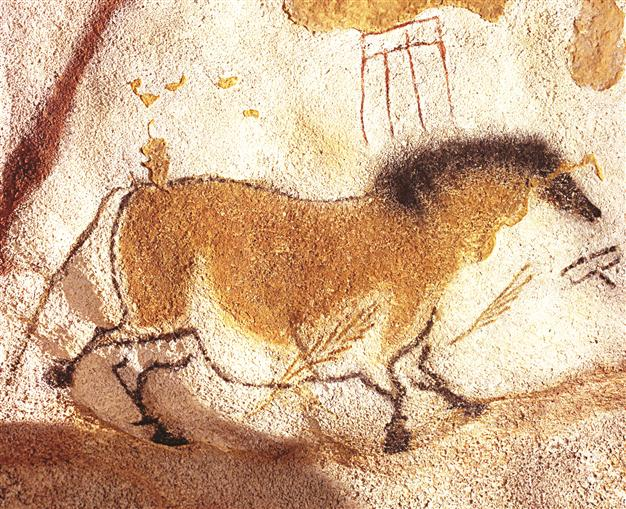Cave-horse painters draw what they see
WASHINGTON - Agence France-Presse

Photo courtesy of University of York
An international team of researchers said Monday they have found the first evidence that spotted horses, often seen depicted in cave paintings, actually existed tens of thousands of years ago.
That means ancient artists were drawing what they saw around them, and were not abstract or symbolic painters, a topic of much debate among archeologists, said the findings in the Proceedings of the National Academy of Sciences.
By analyzing bones and teeth from more than 30 horses in Siberia and Europe dating back as many as 35,000 years, researchers found that six shared a gene associated with a type of leopard spotting seen in modern horses.
One prominent example that has generated significant debate over its inspiration is the 25,000-year-old painting, “The Dappled Horses of Pech-Merle” in France, showing white horses with black spots.
“The spotted horses are featured in a frieze which includes hand outlines and abstract patterns of spots,” explained Terry O’Connor, a professor at the University of York’s Department of Archaeology.
“The juxtaposition of elements has raised the question of whether the spotted pattern is in some way symbolic or abstract, especially since many researchers considered a spotted coat phenotype unlikely for Paleolithic horses,” he said.
“However, our research removes the need for any symbolic explanation of the horses. People drew what they saw.”
The team was led by Melanie Pruvost of the Department of Evolutionary Genetics at the Leibniz Institute for Zoo and Wildlife Research and the Department of Natural Sciences at the German Archaeological Institute in Berlin.
















